By G. L. Pease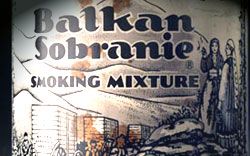 In the on-line pipe communities, there is often passionate conversation about the classification of blend types, and in these discussions, the most impenetrable clouds of mystery seem to swirl around those blends containing Latakia. What is an "English" mixture, and how can one be distinguished from a "Balkan" style blend? The problem is that both of these terms, despite broad usage, are somewhat ambiguous, at best, and, worse, the commonly held notions of what they mean is just plain backwards. And, yes, I’ll admit up front to being one of the early champions of this wrong-headedness. What? Read on.
In the on-line pipe communities, there is often passionate conversation about the classification of blend types, and in these discussions, the most impenetrable clouds of mystery seem to swirl around those blends containing Latakia. What is an "English" mixture, and how can one be distinguished from a "Balkan" style blend? The problem is that both of these terms, despite broad usage, are somewhat ambiguous, at best, and, worse, the commonly held notions of what they mean is just plain backwards. And, yes, I’ll admit up front to being one of the early champions of this wrong-headedness. What? Read on.
It seems fairly clear that the term "Balkan" as a blend descriptor derives from the legendary Balkan Sobranie, and came into common usage as a way to describe tobaccos that are similar in character. That’s not really a problem, but, subsequent discussion of what this term might mean has led us down an entirely wrong path. A "Balkan" blend simply isn’t what it’s often said to be.
First, some background. Ernst Voges, in the Tobacco Encyclopedia, makes no reference at all to a "Balkan" style blend, but does define an English mixture as, "Pipe tobaccos with a distinctly spicy taste, produced by the addition of aromatic tobaccos (e.g. Latakia and Perique) to a base of best quality Virginia." (123) Unfortunately, this is not much help in reaching towards any sort of disambiguation. Under "English pipe tobaccos," we find " Pipe tobaccos blended to the British taste, and based on flue- and fire-cured Virginia or Kentucky , sometimes also incorporating small amounts of Latakia, Louisiana or Perique, in which case they are commonly known as mixtures." (123)
Voges goes on to discuss mixtures as, "Name given to coarse cut, shredded tobacco blends used in pipe smoking. To be distinguished from plug and bar tobaccos, which are sold in pieces, and shag and flake." (204)
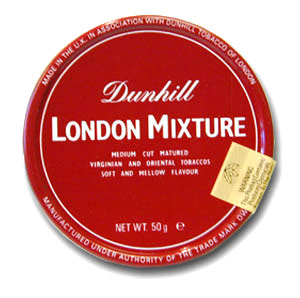 At least some parts of these definitions have traceable historical antecedents. In Dunhill’s literature, for instance, the term "Mixture" was used as early as 1910 to describe those blends which contained Virginia and oriental tobaccos. (Importantly, in manufacturers’ early catalogues and pamphlets, Latakia was often lumped in with other oriental tobaccos in blend descriptions. That the noble leaf was not always specifically mentioned as a separate component does not necessarily indicate that it wasn’t included in a mixture’s formulation.)
At least some parts of these definitions have traceable historical antecedents. In Dunhill’s literature, for instance, the term "Mixture" was used as early as 1910 to describe those blends which contained Virginia and oriental tobaccos. (Importantly, in manufacturers’ early catalogues and pamphlets, Latakia was often lumped in with other oriental tobaccos in blend descriptions. That the noble leaf was not always specifically mentioned as a separate component does not necessarily indicate that it wasn’t included in a mixture’s formulation.)
This gives us a reasonable working notion of what a mixture is. But, until relatively recently, our British brethren wouldn’t likely have much of a clue of what we were on about if someone mentioned an "English" blend, and discussion with friends across the puddle have verified this. The term doesn’t seem to gain any international currency until Richard Carleton Hacker’s publication of The Ultimate Pipe Book in 1984, though earlier, Carl Ehwa makes some allusion to differences between English and American mixtures in his book, Pipes & Tobacco (183-184), and Milton Sherman presents similar discussions in All About Tobacco. (45-49)
So, while we might argue that "mixture" has some useful meaning, the term "English tobacco" would only denote, at least historically, any blend produced without artificial additives, chemical flavorings or humectants. Straight Virginias, plugs, slices, mixtures would all fall under this banner, if made according to the now defunct purity laws that once governed tobacco production in Britain. And, indeed, in the 1940s and before, even purveyors in North America seemed to be satisfied with that loose description. Companies like Wally Frank produced such blends as "English Plug Cut," a pure tobacco comprising Virginias and traditionally steamed Cavendish leaf.
By the 1960s, there seems to be some commonly held distinction between "American" and "English" mixtures, the former containing burleys and flavored tobaccos, the latter adhering to the purity laws. Over the past thirty years or so, however, pipesters have come to nearly universally accept the notion that an "English mixture" is a pure tobacco mixture comprising virginias, orientals, latakia and perhaps perique. It’s as good a starting point as any.
But, what about these so-called "Balkan blends?" In my searching, I have found nothing in the literature to give this term any thrust. Though there are plenty of references to "Balkan tobaccos" in various catalogues and pamphlets, both British and American, the term has always been used to describe a component, not the mixture itself. Returning to Voges, we find, "Balkan – Bulgarian term for Djebel[1] tobaccos, i.e. those oriental tobaccos coming from mountain areas." (25)
In fact, it wasn’t until some time in the 1990s when the neologism, "Balkan blend," rose up from the murky waters as pipesters sought to differentiate Latakia blends that seemed more oriental-forward than English mixtures, but produced from similar components. The earliest uses of the term were found in on-line forums and chat groups on the internet. Up to that point, we had Balkan tobaccos, and we had Balkan Sobranie, a specific blend containing these tobaccos, and somewhere along the way, the name was abducted and held for ransom. Here’s where things get more challenging.
Most smokers of Latakia blends, when asked, would probably hold up that Sobranie stuff as the prototypical "Balkan blend," and this certainly makes some sense. On the other side of the Balkan/English coin, Dunhill’s London Mixture, first created in 1928, would serve as well as the classic exemplar of an English mixture. Unfortunately, this is troublesome in any attempt to solidify our definitions, since the two blends are precisely the opposites of what we would think of them as being, given the connotations of these terms in our currently fashionable parlance; London Mixture contains relatively little virginia leaf in its makeup, and Balkan Sobranie, quite a lot!
Confused? Me, too. For years, I’ve also adhered to the popular notion that the term "Balkan" might have some meaning when referring to a type of tobacco; some way of differentiating one blending style from another, but, if things are backwards in our modern interpretations, does it really mean anything? If the quintessential "English" mixture is actually a "Balkan," by our terms, and the "Balkan" is "English," should we really even be using the terms?
Of course, I’m being more than a little finicky, but if the connotations of these terms are topside-down, which they clearly are, don’t they darken our understanding of what the blends they are used to describe are? Since it’s unlikely that we can easily change the way we have come to interpret them, maybe they should simply go away, or at least be accepted as interchangeable, if not completely nebulous.
For my part, I’ve decided to simply adopt the less descriptive, but more precise "Latakia mixture" in all future discussions, but, no, I’m not going to rewrite my labels.
Now that I’ve used my inaugural column to dive into the waters of controversy, all I can do is hope that I haven’t bored the readership completely to tears, and that my byline will appear again in the next issue. I’ll try not to be so pedantic in the future.
Cheers,
-glp
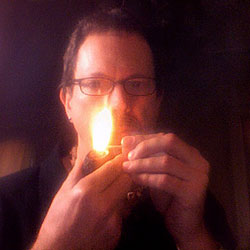
Since 1999, Gregory L. Pease has been the principal alchemist behind the blends of G.L. Pease Artisanal Tobaccos. He’s been a passionate pipeman since his university days, having cut his pipe teeth at the now extinct Drucquer & Sons Tobacconist in Berkeley, California. Greg is also author of The Briar & Leaf Chronicles, a photographer, recovering computer scientist, sometimes chef, and creator of The Epicure’s Asylum. |
NOTES:
1. Voges, 113; Djebel Tobacco – 1) Name given to those oriental tobaccos grown in mountain districts, as pooposed to those planted on the lower slopes of foothills or on the plains. … They are always superior in quality to the lowland tobaccos, having a better colour and finer aroma. The Basma-type Djebel tobaccos from Greek Thrace and the Greek and Bulgarian parts of Macedonia are particularly famous.
WORKS CITED:
Carl Ewha, Jr., Pipes & Tobacco – undated
Voges Tobacco Encyclopedia – © Mainzer Verlagsanstalt und Druckerei Will und Rothe GmbH & Co. KG, Mainz, Pressehaus, 1984
Milton M. Sherman – All About Tobacco, © 1970, Sherman National Corp.




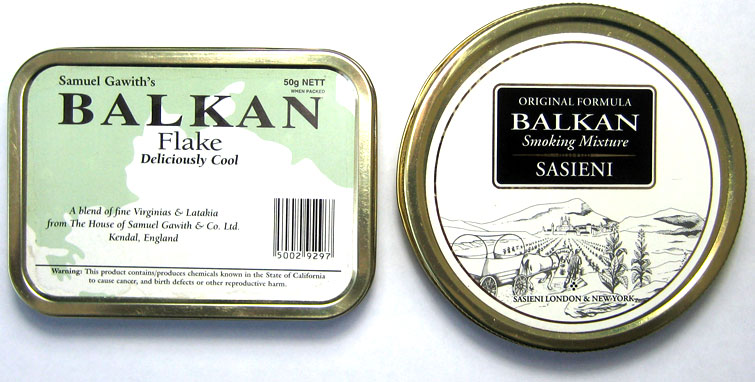
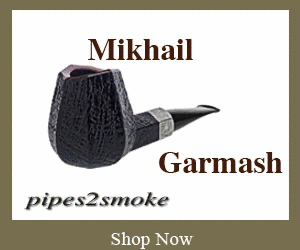






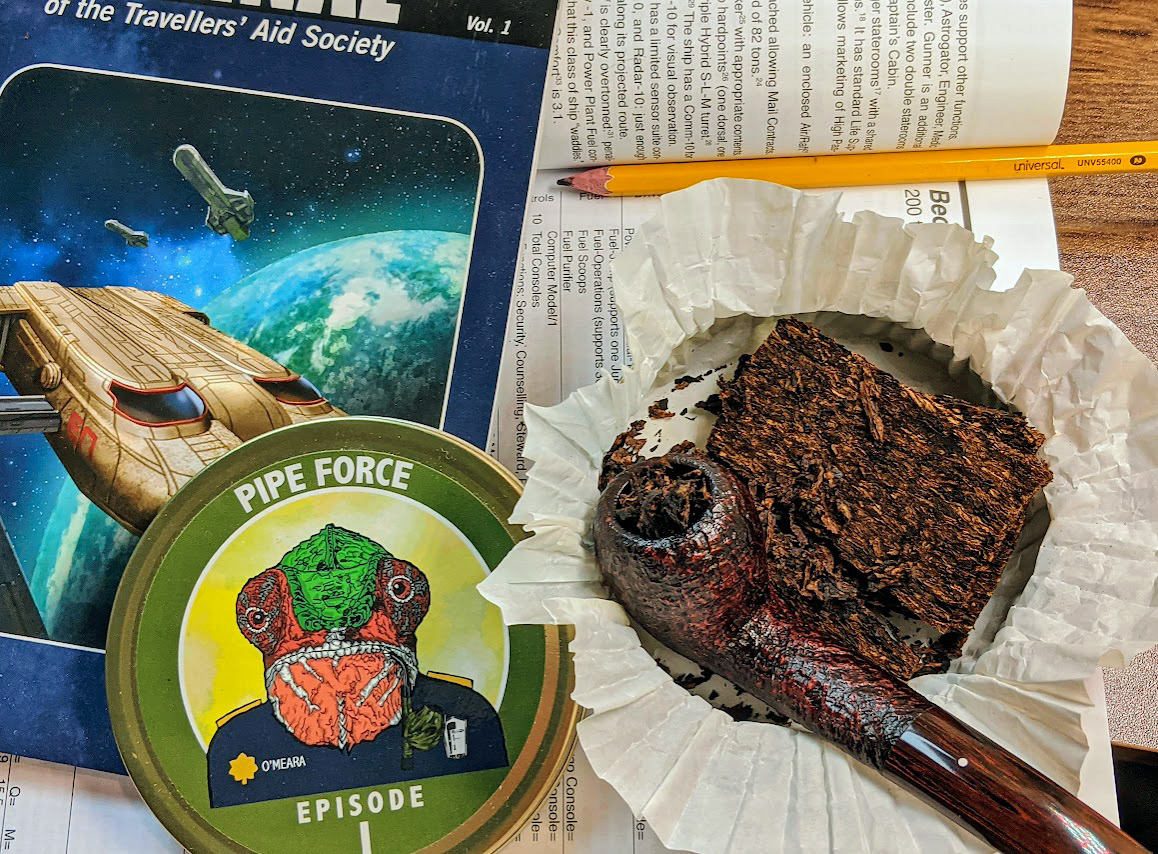
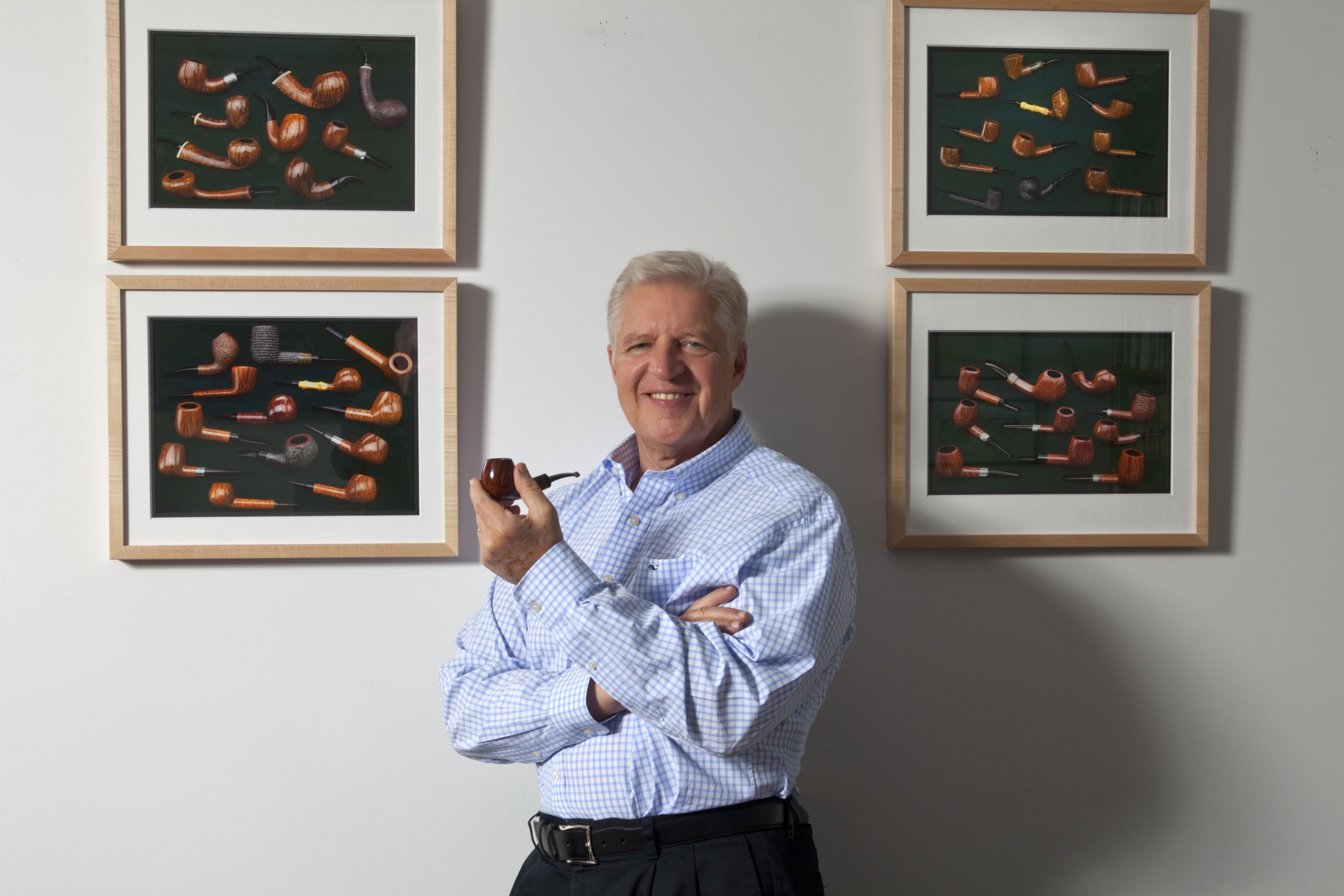





Excellent article, Greg! I particularly like the way you track down the historical use of these terms, even going as far as providing a works cited section.
Looking forward to more articles (not to mention blends) from you in the future.
Cheers,
Crow
Yes, this discussion has gone on for awhile and Greg has taken the sane
approach. The poetic use of terms, such as: English, Balkan, Scottish
and Oriental in blend descriptions has rendered these terms almost meaningless.
Blend descriptions have the formidable task of both advising and encouraging
use, without giving too much information out, as blenders work hard to create
new blends and maintain consistency from year to year. I’m happy to see this
approach, where blend components (at least in part) will take priority over the
use of ambiguous blend classifications. This works for me and I hope that others
will follow, as these terms have a number of us confused on both sides of the
pond. This article is another good read and if it’s a bit pedantic, this is
because the topic has required it to be. Thanks Greg.
Great article Greg!
I have never used the term Balkan when describing a blend unless it is part of the name. Occasionally I will say/write the term English/Balkan. I consider the two terms interchangeable. I used to just say Latakia blends, but then I just started referring to all blends that contain Latakia as English blends. I may have to go back to using the term Latakia blends.
It is kind of funny how the term English blend has evolved from a blend that is considered “pure” (based off of the purity laws) to a blend that contains Latakia tobacco.
Once again the maestro has lent clarity to a long muddied discussion. I smoked a few hundred pounds of Sobranie White label and Black label and used those as my benchmark for Balkans. Now I search out tobaccos that give us a clue to the flavor profile. GLP seems to have the best handle on getting this right…others are starting to catch up.
The English language does not have a Bureau of Language like some other languages, hence terms become muddy as to there meanings. Gregory, my friend, this is an informative and entertaining article and I look forward to more. I took up the pipe in the mid 60s and there were English mixtures, that being VA, Latakia, and Orientals, and Aromatic, those being Burley with casing, a third class was Cavendish, think Brown Amphora. I too have struggled with nomenclature, and now have the definitive descriptions. There are tobaccos i like and those I don’t care for. Simple and works for me. I like simple. Great work!
Thanks for taking the time to examine this aspect of the tobacco classification issue. For my part I think the traditional labels lend a certain romantic appeal to the pastime. However, your point, becoming less descriptive but more precise, is well taken. I would take it one step further and advocate for listing all the constituents of a blend in order of their qualitative contribution to the blend.
Excellent article Greg.
You have managed to crush a wonderful delusion I have cherished since I first tried Sasieni Balkan. Your points are well made.
However; I must ask a favor of you… Please never mention this to my wife, who says that the Sasieni smells good but the latakia blends in my stash stinks.
Can’t wait for your next rendering.
Keep being as pedantic you you want to be – I love this level of discourse. The world of pipe smoking can be unnecessarily obtuse, so shedding light on some confusing (and ultimately meaningless) terminology is a public service to the unwashed masses.
When reading the many reviews of Balkan Sobranie on TR you find many odes to the long lost friend, but no specific descriptions of what it smoked like, much less what was actually in it. I would love for someone who knows to give a detailed description of Sobranie and perhaps suggest a few current blends that might approach its style and qualities — sort of the way Greg Pease has done for Dunhill’s London Mixture on his blog. Cheers.
Greg,
Pedantic is JUST what is called for on this topic, and I am SO glad that someone, with the credentials to do so, has set out a clear, and long-needed exegetical trail to follow. Thanks so much for this. I hope this article will serve as a touchstone in creating an Orthodoxy in Tobacco terminology.
Very interesting article Greg.
You did a few things for me. The most important being the confirmation to the rampant confusion regarding general tobacco nomenclature.
It is like an epidemic, running through most pipe smokers minds, both new and old. Visiting any pipe forum will confirm this immediately. Sitting down amongst friends for a pipe will do the same. Your well aware of this problem and now your taking the next step to try and help people find a solution or clarity as it were.
A personal thank you from me for this because I admit that I am clearly in that bunch. It’s almost as if I have been hiding from learning more about this process because whatever I have heard so far has only raised more questions. You become afraid to hear what ‘next thought’ will come out of people’s mouths which will completely contradict the earlier one.
Your explanation highlights the source and existing confusion in the matter. An honest portrayal of a situation is the only way to approach it.
I’ve always wondered why Tobbacoreviews.com never seperated tobaccos into English, Balkan, Scottish, etc. Now I understand that these sobriquettes retail very little meaning and would just confuse the reader rather than enlighten.
Thanks for the heads up.
A description of Balkan Sobranie would have it’s own difficulties, not least is which incarnation of that famed blend is being described. I’ll leave it to Greg to supply dates and blenders but my acquaintance with BS was the late ’50’s/ mainly early ’60’s, but at that time I knew nothing about baccy’s or components; I do recollect it as a Va. forward blend using Syrian Latakia and Orientals (much vaunted Yenidje), the resultant colouring being light to mid brown with dark strands. Later, I now know, Cyprian Latakia was substituted for Syrian (but not necessarily all at once – i.e the blend evolved over time).
The Gallahers pouched incarnation was much darker and more Latakia heavy and probably lead to the usage of the term Balkan as signifying a Latakia/Oriental dominated blend. BTW, this last version was OTC in UK and not too highly regarded – I certainly switched my allegiance to Dunhill blends.
So, I’m agreeing with Greg that original Balkan Sobranie, in Burlington Arcade days, was an “English” mixture by today’s terminology , Balkan merely being the blend name. London Mixture, a quintissential “English” mixture, was much more Oriental forward and would now be a balkan blend if the titles had the common usage meanings (and hadn’t got reversed anyway).
Jim, I think you’re spot on, here. The use of Syrian latakia began to decline in the early 1960s, when it stopped being produced. Of course, manufacturers had their own stores of the stuff, and probably phased it out gradually, increasing, proportionally, the use of Cyprian leaf as the supply dwindled. There’s no way of knowing how long this took for different manufacturers, but certainly by the end of the decade, Cyprian was dominantly, if not exclusively employed.
Gallaher’s took over production ca. 1982, when Sobranie House licensed them to produce it. Again, the blend went through a period of evolution, with Latakia content changing over time, and the blend turning into something quite different from what it had been. Regular smokers of the brand probably adapted to the changes, but someone who only bought it occasionally would easily recognize the difference between an early 1980s example of the blend and one produced in later years. It’s quite dramatic.
There were similar differences between the original Dunhill blends and those produced by Murray’s. And, what about Rattray’s? When McConnell and Rattray were manufacturing the blends concurrently, they were as similar as they could be. Once McConnell shuttered, and manufacture moved to Germany, the blends took a different turn. Today’s, fine blends in their own right, bear little resemblance to the originals.
Language is malleable, certainly, and to some extent, we simply have to accept the plasticity of some terms, and adapt ourselves to changing connotation. But, when language evolves in a way that actually confuses meaning, maybe it’s time to take a step back and reconsider our usage. If “Balkan blend” and “English blend” had meanings that were consistent with what they claim to represent, there wouldn’t really be a problem. But, they way they are connoted in the contemporary vernacular is backwards. Over time, people will forget (and those who remember will have been forgotten) what the origins of the terms were, and what they originally may have meant, and the new usage will be the only one known unless we strive to preserve their real meaning.
Bravo on a fine article about what “Balkan” means (or doesn’t mean).
Regarding “mixture”, I had always thought a mixture was something that you could do in a mixing bowl… with 2 or more types of tobacco in variable amounts. They are not “blended”, they are just “mixed”. If you process the mixture further with pressing, stoving, etc., TOGETHER, then it becomes a “blend”. Is this correct?
Looking forward to your definition of “Cavendish” (if you dare). 🙂
Great article, Greg.
Like many here, I am looking forward to many more informative articles. English is the most difficult language to master and who really is its master?
Like another post says, I really never have heard what was in Balkan Sobranie, maybe one day we will have a match fot it, as is the case with other blends that have stopped being produced.
As always, Greg is right on the money about Balkan blends.
The use and abuse of the term “Balkan” has grown into a meaningless mess. The term was (as I understand it) originally used to refer to Balkan Sobranie Original (white) and BS #759 (black), but ALL blends produced by that company were labelled Balkan Sobranie, even their Virginia flake and Cigar blend. Ergo, we must assume that Balkan Sobranie is the name of the company, and in in no way a description of a blend.
The BS English (Original and #759)blends were Virginia based, using a generous amount of Yenidje, whereas Dunhill London Mixture and State Express London Mixture has bases of Oriental leaf. Many blends of the “golden era” were referred to as English Orientals to distinguish them from more traditional Virginia/Latakia blends (such as Dunhill #965 and Standard Medium).
Some of the blends now marketed as Balkan (S. GAwith, Gawith and Hoggarth, etc!) are strictly Virginia/Latakia, with no discernable Oriental leaf.
The term Scottish (or Scotch) mixture only adds to the confusion, as there is no agreed upon definition for the term. Some of the great English blends of the past were produced in Scotland (John Cotton, Rattray). Carl Ehwa refers to the entire class of blends as English/ Scottish.
My conclusioin is that we should stop wasting time on putting tobaccos in pigeonholes, and spend the time concentrating on the flavors of the blends. Isn’t that what it’s all about?
Interesting, although I do note that there is some information in the “Balkan” label, in that there is a similar taste group to tobaccos so labelled. Maybe not as much agreement on how to get to that point, as is so aptly pointed out, and not every blend in that part of the spectrum gets the label, but everyone which bears the label seems to be in the same area of the church, if not precisely in the same pew.
I would point out to those not familiar with Milton Sherman’s out of print book “All About Tobacco”, it is chock full of information and available on line for free at: http://tobaccodocuments.org/nysa_ti_s1/TI56720085.html.
Beware the on-line copy is difficult to read as there are typos and code entries that do interfer with reading, but the photographic copy of the book is also there so you can double check what the author said. While there are a few factual “errors”, such as the fact that the reference to the British tobacco “purity”, this is solely due to the fact that the law has changed since the book was originally published.
Looking forward to your next missal GLP,
Al (in Canada)
Just tried my first GL Pease tobacco, Chelsea Morning. excellent. Review to come later. But this article helped clear up a few things for me, so welcome and great start Mr. Pease 🙂
Simply put, this is the best explanation I have ever read. Forty years ago, the only way I could distinguish Balkan from English was by the name on the tin. Forty years later, it is still that way for me. Personally, I prefer, as Greg does, to use the term “Latakia Blends” and avoid the confusion altogether. Then I describe the extent of Latakia such as “heavy” or “light” Latakia.
I read Mr. Bob’s article on “Pipe Dedication.” That article stated that on “Genre Dedication,” it was recommended to dedicate one pipe to English/BALKAN blends.
Bob stated in a comment on this article “I may have to go back to using the term Latakia blends.”
Seeing that this article was written recently after the article on “Pipe Dedication” was published, I was wondering whether perhaps it would be best to dedicate one pipe to Balkan Blends, and one for English Blends.
Since I am a novice pipe smoker and purchasing pipe smoking gear, I was wondering what would be the most ideal on a budget. I already plan on buying four pipes for Aromatics, Virginia/Perique, and perhaps two more for English/Balkan depending on what would be recommended for someone on a budget.
After looking for days to figure out the differences between English/Balkan/Oriental (at least to have some guidepost with which to pursue a good smoke), I found nothing of any value to help me decipher the differences until I happened onto this article. I read it and was very much enlightened. It wasn’t until later that I realized that renowned G. L. Pease was the author. Thank you for helping make some sense of all rigmarole floating around in cyberspace.
A while back, I posted a thread on a classification scheme for pipe tobaccos on Smokers Forums. My goal was to base the classification on principle blend constituents only. Therefore, the terms “Balkan” and “English” were relegated to the dustbins of history. Here is the link:
http://www.smokersforums.co.uk/showthread.php?t=96388
My Tobacco Classification / Touchstone Blends
There are as many ways to classify pipe tobacco blends as there are pipe smokers, and then some. However, I have found the following list suits me. I see tobacco blends for the pipe smoker divided into 16 categories. An alternative, earlier, classification was provided by the Pipe Club of Norfolk UK, from which some of the categories originated. However, since this early list, a number of new categories have arisen, such as the Cigar Leaf Blends. Also, a number of pipe smokers have advocated against the terms “English Blends” and “Balkan Blends”, as many tobacco blends actually span the two and there really exists a continuum of sorts. So the terms “English Blends” and “Balkan Blends” have been dropped by many, in favor of the more descriptive terms “Latakia Mixtures”, which in turn is divided into “Light / Medium” and “Medium / Full”.
I am aware that this is a highly subjective exercise. And it is to be expected that everyone will have a different take on what constitutes a Touchstone Blend. Also, there will be “lumpers” and “splitters” – that is, those who feel there are too many categories and those who feel the need to split even more. What I hoped to do here, for myself really, was to set up a series of benchmark blends that I could later use as “standards” by which to judge future blends within a category. It is hoped that these lists will provide a jumping off point to begin exploring the wonderful world of pipe tobaccos for others as well.
1. Straight Virginias (non-flake, -rope etc.).
2. Virginia Flakes (Light).
3. Virginia Flakes (Full).
4. Virginia Plugs.
5. Virginia Ropes and Twists.
6. Lakeland Style.
7. Virginia / Kentucky Blends.
8. Virginia / Burley Blends.
9. Burley Blends.
10. Virginia / Perique Blends.
11. Virginia / Perique / Burley Blends.
12. Virginia / Oriental Blends.
13. Light / Medium Latakia Mixtures.
14. Medium / Full Latakia Mixtures.
15. Cigar Leaf Blends.
16. Aromatics.